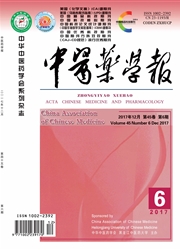

 中文摘要:
中文摘要:
目的:初步探讨中医经典古籍《黄帝内经》中隐喻语言的类型及功能,以期更好地理解和挖掘中医语言的特点。方法:从认知语言学中的隐喻角度进行研究。结果:《黄帝内经》中隐喻语言的类型可分为:自然型、社会型、哲学型;其功能主要有:直接描述和解释人体正常的生命功能;阐述疾病发生发展的规律和指导治疗原则;构建中医的基础范畴、核心概念和隐喻模型。结论:中医经典古籍《黄帝内经》中蕴含着大量的隐喻语言。古代中医学家在认知生命现象、构建中国医学理论体系的过程中,大量运用了自然界、人类社会和哲学思想中各种已知的范畴或概念进行隐喻,逐渐形成了独特的中医隐喻语言,对中医学的概念及范畴化、中医理论术语和模型的创建、中医理论体系的构建与发展发挥着重要的作用。
 英文摘要:
英文摘要:
Objective: In this paper we preliminarily study the types and functions of metaphorical language in Chinese medical classics Internal Classic of Huang Di to better understand and explore the characteristics of Chinese medical language.Methods: We use metaphor theories in Cognitive Linguistics for study.Results: The types of metaphorical language in Internal Classic of Huang Di can be divided into: natural type,Social type,type of philosophy;Its functions are: to directly describe and interpret normal life functions of human body;to explain development of disease and to guide treatment principles;to build basic categories,core concepts and metaphor model of Chinese medicine.Conclusion: The Chinese medical classic Internal Classic of Huang Di contains a lot of metaphorical languages.The ancient physicians had associated the complex life phenomena to the nature,human society and philosophy in the process of cognition and establishment of Chinese medicine system.A great deal of categories and concepts that we are familiar with had gradually formed unique Chinese medical language.Metaphorical language plays an important and irreplaceable role in concepts,categories,medical terms,models of Chinese Traditional Medicine(TCM) theory.
 同期刊论文项目
同期刊论文项目
 同项目期刊论文
同项目期刊论文
 期刊信息
期刊信息
